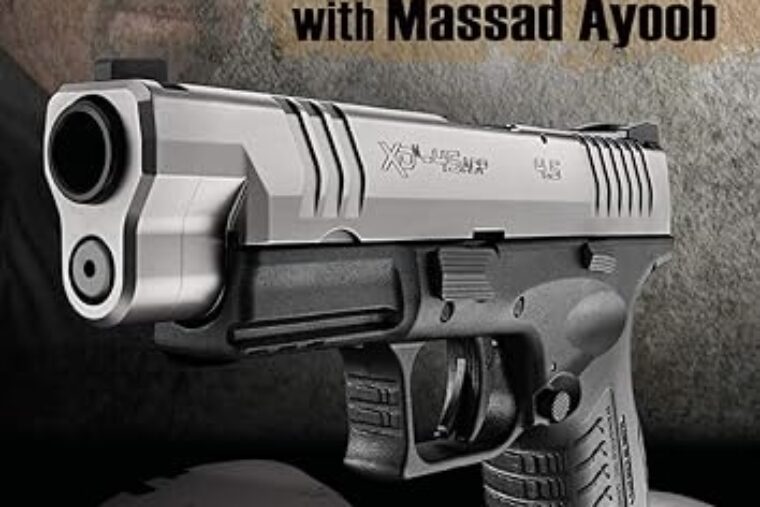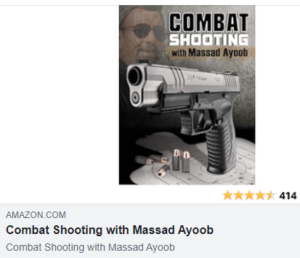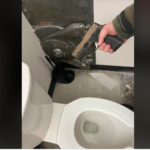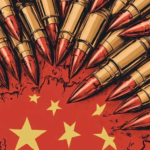When shooting you must learn to be in the moment only.
Zen And The Art Of Combat Pistol Shooting
“The author’s name is Massod Ayoob. You can find a lot of his articles in “Combat Handguns” magazine. He is also the founder of “Lethal Force Institute” located somewhere in the North Eastern U.S.”
Zen has always been associated with various marital arts, including archery and swordsmanship. But more and more, we are beginning to apply much of the same Zen principles to enhance our shooting skills. Zen is difficult to define. Yet ask any player of sporting games to explain their peak performance and they’ll tell you that in a special moment, the mind, the body, the goal, the tool and the result are simply one.
To accomplish something without thinking – it merely occurs – this is Zen,
Like the Zen archers of Japan and the sword masters, we train to excel at all times with any firearm at the limits of human speed, distance, and against all adversaries under any circumstances. To achieve this level of proficiency, we must learn to become one with the pistol, we must learn to shoot without thought. The physical act of firing the pistol must blend with the mental aspect of control, planning, and discipline to achieve the desired goal.
The shooter must be in control of himself, not just the pistol. He must have a clear mind that is perfectly still. Most shooters’ minds are like a stream of rapids filled with self-doubt, fear, and irrelevant thoughts.
The relationship between the shooter and the pistol.
The shooter in control of himself does not display overt reactions to progress or lack of progress.
He is not worried about what others think of his ability. He is not elated at success and disappointed at failure. To do so is to be a child of circumstances.
To master the art of combat pistol craft, the shooter needs to become one with the pistol.
Think about a musician for a moment, When he performs there is no player and instrument. The player and the instrument are in harmony and music is created..
If makes no difference whether it’s a musical instrument, a basketball or firearm, the true master spends time to the point where the instrument becomes an extension of the hand.
If you spend as little as 15 minutes a day handling your pistol, dry firing, practicing your draw, working on your indexing ability, sight alignment and trigger pull, you’ll be amazed at the results.
When practicing your gun-handling skills it’s important that you visualize yourself executing proper tactics as well as your shooting skills.
Conditioned reflex.
When learning to type, a typist reads the letter, mentally selects the corresponding key. and consciously directs a finger to strike the key. After training, the typist automatically sees and types a letter without thought. The mental thought process has become a conditioned reflex.
This reflex action is the subconscious mind evaluating the situation, making the decision of whether or not to release that shot, and without conscious thought on your part, starting the trigger finger to move and continuing pressure until the hammer falls.
Your goal should be to fire a shot when the sights are properly aligned and on the target without making a conscious decision to pull the trigger. If you have to stop and think about aligning sights and squeezing the trigger, you’re going to lose the fight.
You must learn to shoot in the present tense. This means that you are aware only of your shooting as it is taking place, one shot at a time. If your mind is on the last shot, next target, or anything else, you are not going to shoot well.
Can you ever practice too often?
The answer is no. However, a practice session can be too long. This can be a danger. If you get overly tired and start missing your shots, then you risk training yourself to miss the shot. So train daily, if possible, but keep the sessions just long enough to cover the important elements.
Many people find it difficult to maintain a regime of daily practice. The list of reasons (excuses) can be endless. To handle this problem, make a list of excuses as to why a goal cannot be accomplished.
Here’s a few examples:
- I don’t have time to practice.
- I have no one to instruct me.
- I lack the knowledge of what to do.
- I don’t know how my pistol works.
- I can’t shoot well under stress.
- And the list goes on.
The objective now is to take each excuse one-by-one and work to eliminate it.
For example: “I don’t have enough lime to practice” is an excuse that can be eradicated with a little thought.
- Substitute air pistol practice at home during free moments.
- Practice dry firing every day, even if you have to do it in front of the television. (Warning: When dry firing always make sure the pistol is unloaded and the ammunition stored safely in another room.)
- Organize your leisure time to create time for live fire practice.
- Rearrange your priorities. If you are going to carry a pistol, perfecting your shooting skill should be high up on your list.
- Use visualization to improve your shooting skills and augment your live fire practice.
The systematic elimination of excuses allows you to focus on building your skill and achieving peak performance.
When you shoot, avoid being judgmental, just shoot.
In training for combat shooting, the shooter must not think beyond the shot. If you are expecting a hit, or already making excuses for a miss, or if your mind is involved in self-criticism, you will not be able to focus on controlling yourself.
The mind cluttered with thoughts prevents you from achieving your goal.
When shooting you must learn to be in the moment only.
Combat Shooting with Massad Ayoob is available at Amazon.com.




